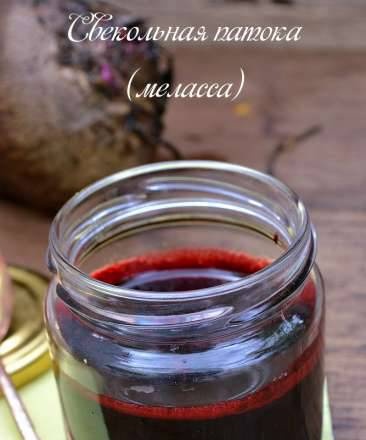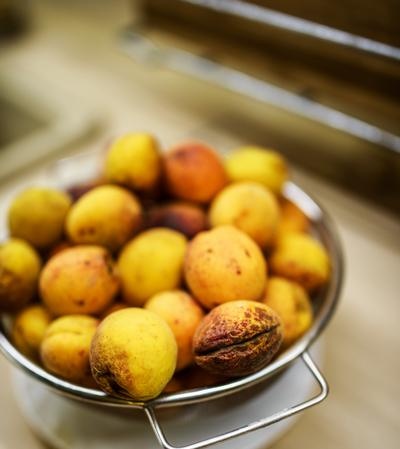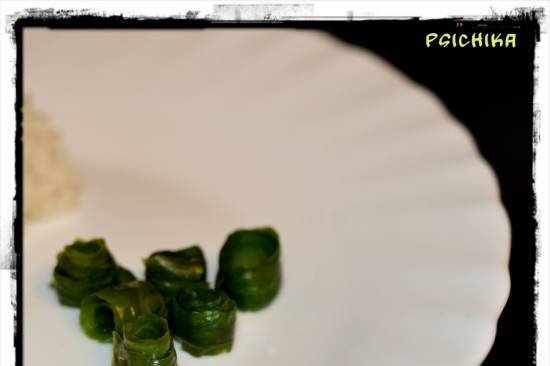|
 The triumphal procession of beets around the planet, which continues to this day, did not begin at all ceremonially. In the middle of the 18th century, the German chemist A. Margraf obtained the first sugar from the roots. He was so proud of his discovery that he immediately rushed to the Academy of Sciences in Berlin and made a report there. The triumphal procession of beets around the planet, which continues to this day, did not begin at all ceremonially. In the middle of the 18th century, the German chemist A. Margraf obtained the first sugar from the roots. He was so proud of his discovery that he immediately rushed to the Academy of Sciences in Berlin and made a report there.
The chemist was not successful, however. In those years, a lot of cane sugar was exported from the colonies. Filled up the whole Evpony. Make your own, European? What to do with reed then? The Margrave was immediately forgotten, and for fifty years no one remembered him.
Then came the Napoleonic Wars. Communication with the tropics was broken. Europeans had to drink unsweetened coffee. Inevitably, they remembered about beets. There was another chemist - Ahard. In 1797, he issued a factory method for extracting sugar from beets.
It would seem, rejoice, Europe! Make beet sugar and wave your hand at overseas. However, this replacement was not beneficial to everyone. And Akhard was offered a bribe of 50 thousand dollars to give up his invention. Two years later, 200,000 were offered! But without success. Then the prominent chemist H. Davy was persuaded to reject Ahard's patent. And something happened that the learned world could not believe. The great Devi, a chemistry classic, personally drove to Ahard. Sucked on a piece of refined sugar. Then he wrote that this sugar is either bitter or sour, but in general, it will not go for food. On this occasion, the French sarcastically remarked: "Davy sacrificed his scientific conscience for the sake of false patriotism."
But one way or another, the story took its toll. Even before the opening of Akhard, the first sugar factory was launched. And where? Here in Russia. In 1795. In France, the first was launched in 1811, and a little earlier, at the very beginning of the century, in Germany. However, the opponents of sugar beet did not give up. Even the famous, cleverest chemist Liebig was disgraced. “Any donkey,” he said, “can build a sugar factory ... but the game is not worth the candle. Beets are expensive. It must be grown in greenhouses. "
Why did he decide that in the greenhouses? After all, although she is a southerner, she also grows north of Moscow, even in Kalinin. Apparently Liebig knew little about agriculture.
Liebig made his statement in 1844. And in 1872 a congress of farmers gathered in Paris. Agronomist Belin made a presentation.
- How long will France be a destination country? He asked in annoyance. "There is a reliable means to turn it into a rich, exporting country."
At these words, a huge root crop appeared on the platform, similar to an artillery shell.
“This is it, this remedy,” Belin continued. “Pay attention: the beet has the shape of a cornucopia! And such a horn it really is. You just need to be able to extract all the riches contained in it. "And he explained what the secret of enriching France is:" Pomace is the elixir that will raise the power of the country! The pomace that remains in plants after squeezing out sweet juice. More beetroot - more pomace, pulp; more pulp - more livestock. A large herd will produce a lot of dung. We fertilize the fields with manure - we get a triple harvest. And let's start selling wheat ...
I do not know how this appeal was received in Paris, but in neighboring Belgium it was heard. The Belgians transferred the bulls to the pulp and began to really get more meat. Only recently has the press reported that when the bulls are led to the slaughterhouse, their legs bend under their own weight. Not because the carcasses are fleshy, but because the bones soften. Excessive passion for beet pulp did not lead to good. Everything is good in moderation...
Now let's take another part of the problem: not pomace, but beet juice, from which sugar is evaporated. There are still some impurities in the juice, a whole group of substances: choline, betaine, asparagine.They interfere with the crystallization of granulated sugar. More molasses, less refined sugar. Technologists are trying to get rid of these substances and call them "harmful nitrogen". And from the point of view of a doctor, from the point of view of human health, both choline and betaine are not only not harmful - they are extremely needed by the body. Betaine protects against cancer to some extent, choline also useful. To get your choline intake, you have to find green pea...
 So, striving at all costs to get white sand crystals, the technologist deprives the sweet tooth of exactly those protective substances that he desperately needs. So, striving at all costs to get white sand crystals, the technologist deprives the sweet tooth of exactly those protective substances that he desperately needs.
But back to that meeting in Paris, where beetroot - a sugar beet - was advertised as the salvation of France. Like a cornucopia. Why beetroot? Well, first of all, because it is incredibly harvestable. Not a single cultivated plant stores so many calories on one hectare. 37 million! However, these calories still need to be able to get. In recent years, they began to clarify the numbers and found out the following picture.
Only a third of the beet tops is active. Two-thirds is idle. Over the past 80 years, the weight of the roots has increased by 18 grams, and the tops by 280! The wider the tops spread out to the sides, the less the roots fit. The lower the harvest. An urgent need to redesign the tops. And the root crop itself is also imperfect. It is two-symmetrical. On such a powerful root system cannot form. Now, if only three- or four-symmetrical! In nature, such unique ones are very rare. We ought to make them the rule, not the exception.
Another problem is the tail of the root crop. It has always been considered a water supply apparatus. And before the war, when Maria Demchenko headed the movement of five hundred and thousand people, they noticed an interesting connection. When the harvests rise to 500 and 1000 centners per hectare, the structure of the "cornucopia" changes. The tail thickens and becomes an extension of the sugar-containing root vegetable. Is it profitable? On the one hand, yes. On the other hand, no. For mechanized harvesting, it is better if the shape of the root crop is not long, but round.
These beets stick out slightly above the ground and are much easier for the machine to harvest.
Perhaps even more important than the shape of the beet, its relationship with animals and various creeping evil spirits. Zoologists suggest that the roots of wild beetroot are rough and rustic for the reason that animals have always interfered in the life of beetroot. Year after year, century after century, the four-legged have devoured more tender, sweeter roots, leaving savory and rustic ones. Now, when the breeders have given the beetroot root crops a special sweetness, the wild brethren cannot be dragged away from them by force. This is what the workers of the Caucasian Reserve told.
At the Umpyr cordon, the deer found a field of unharvested beetroot and began to dig up sweet vegetables. The foresters posted guards. Did not help. I had to urgently harvest. We managed to save half. They put the salvaged in piles and covered them with earth. The deer came, scattered the earth and continued the feast. The management of the reserve moved reinforcements to help the foresters. The reindeer were frightened by shouts, thrown stones at them, and beaten with sticks. It only helped for a while. As soon as the huntsmen left the "battlefield", the horned sweet tooth returned and continued what they had begun. In the end, the huntsmen gave up. Burak was killed immediately.
But the very first enemy of the beetroot is the weevil, a small insect, but very numerous. Until half of the last century, it was not heard about him. Why? Clear. They sowed little beetroot, the bug has nowhere to deploy its army. He then lived on salt marshes in Central Asia and did not interfere with anyone. Peacefully grazed there on herbs from the swan family - the wild relatives of beetroot. The path to the north was blocked by a wide belt of steppes.
And people plowed the steppes more and more. More and more often, fleshy and juicy swans settled on them: our garden quinoa, and even the beet-grower, which came from America. In the fall, they were colored with cheerful crimson colors.With these cheerful friends, the weevil penetrated further and further north. Finally I got to the beetroot plantations. What started here! I had to sow the sugar beet three times. The bug ate the seedlings clean.
Fortunately, we noticed that the rooks really like the weevil. The idea arose to use a feathered armada to protect the beetle. The only difficulty is that birds do not always know which field they should fly to. We have to show them the way. There was such a case. The fields of one collective farm in the Kharkov region suffered greatly from the pest. There was a colony of rooks on the farm next door. Collective farmers began to lure the birds, throwing sprouted grains to them, and even crumbled cottage cheese. Closer and closer to the poverty-stricken field. Collecting the bait, the birds finally reached the collective farm beets. The weevil was immediately exterminated.
And now I would like to draw your attention: where did the weevil come from? From the salt marshes. From saline soils. From where the wild relatives of the beet live. This is very important, because she herself is also not indifferent to salt. She has had a need for salt since ancient times. On this occasion, they tell the following story.
One English farmer could not get rid of the weeds. As he walked across the field, he noticed that in one place the weeds had disappeared. He stood for a long time, wondering what was the reason that drove them from the field. Then he remembered that in the fall he was carrying salt on a cart and spilled it in this place - the sack was untied. Maybe the weeds have driven out the salt? With this thought, he hastened to the beet plantation, where the weeds were especially violent. He scattered salt there and waited: what will happen? Autumn came. The weeds are gone. Even wheatgrass, which could not be dealt with by any means. But the beetroot itself looked like a birthday girl. She not only did not suffer, but responded with an unprecedented harvest. Maybe because the snails and weevils that annoyed the owner have disappeared from the plantation. In the heat of delight, the farmer even thought that the looseness of the soil had improved.
How this story ended, I do not know. But you can imagine the ending if you know what kind of beetroot the English farmer was growing. He could live with a feed, canteen or sugar house. If he bred the first two, then he remained in the master. If it's sugar, then you should feel sorry for the experimenter. The purpose of growing sugar is crystalline sugar (sand or refined sugar). On salty soil in the root-fruit is formed not crystalline, but "converted" sugar - glucose and fructose. Such beetroot is much more useful for humans, but useless for a sugar factory.
Of all the tasks that beet growers have to solve, the most difficult concerns fruits and seeds. The fruits of the beet are, as it were, soldered into balls. There are several seeds in the ball. It is worth sowing such a ball, as several shoots will appear. Bouquet. Seedlings must be pulled manually. And this is such a troublesome operation that it takes ten times more labor than in grain fields. And the ball itself is not perfectly round, but angular. Sowing such polyhedra is difficult.
At first, it seemed that solving both problems was not that difficult. We noticed that on the beet bushes there are glomeruli with one seed. Collected. Sowed. Fixed the property of one-seededness in the offspring. Now you do not need to manually disassemble the bouquets of seedlings and you can apply mechanization. The balls themselves were sharpened and turned into balls. So there are varieties. Calibrated seed. It would seem that all tasks have been solved.
Not really. That's what's alarming. IN Finland do not want to switch to a fashionable culture and sow the still multi-seeded one. Tradition? Or is there something in one-seed that does not suit them? In Ukraine, they compared Ramonskaya polyspermous with Belotserkovskaya one-seeded. Ramonskaya was more profitable! Its seeds sprout with renewed vigor. Their germination is also higher. Twice! And at Belotserkovskaya it is so low that sometimes you have to re-sow. But even if a new variety passed all the tests successfully and was highly appreciated in the first generation, then in two or three years it can give less production.And the glomeruli themselves are gradually becoming ... polyspermous.
Not everything is clear when it comes to grinding. In Denmark and Sweden, what they did not do! And they grinded the balls. And polished. And crushed. But they did not receive any benefits. Expensive! Yes, and a large waste of seeds. Most importantly, polished seeds are left without natural protection. Without clothes that nature created for a reason. Clothing regulates moisture. In drought, polished seeds are defenseless. And then shoots are rare.
Beets are a profitable crop. Of all the domestic plants in a temperate climate, beets provide the largest profit per hectare - thirty-seven million calories! Most of all sugar beet is harvested in our country. Twice as many as in the entire Western Hemisphere! No country here can compete with us!
A. Smirnov. Tops and roots
|
 The triumphal procession of beets around the planet, which continues to this day, did not begin at all ceremonially. In the middle of the 18th century, the German chemist A. Margraf obtained the first sugar from the roots. He was so proud of his discovery that he immediately rushed to the Academy of Sciences in Berlin and made a report there.
The triumphal procession of beets around the planet, which continues to this day, did not begin at all ceremonially. In the middle of the 18th century, the German chemist A. Margraf obtained the first sugar from the roots. He was so proud of his discovery that he immediately rushed to the Academy of Sciences in Berlin and made a report there.









